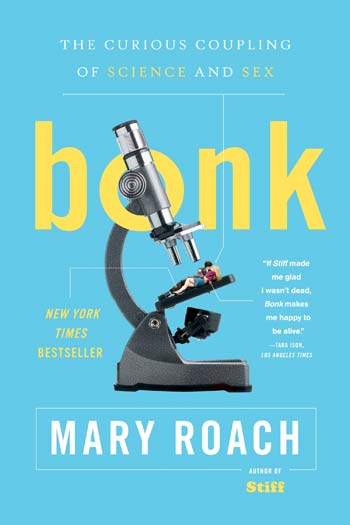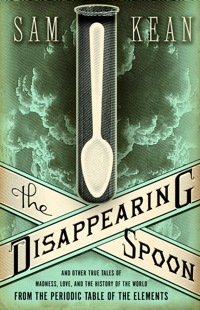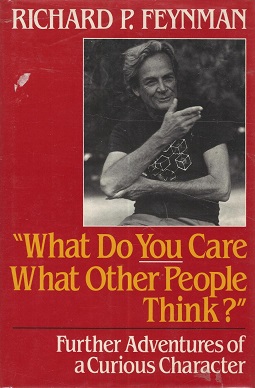 I just finished the book Lies My Teacher Told Me by James W. Loewen. This book is a bit of a “cult classic.” Although this was the first time I’d read it, I had heard it mentioned and cited numerous times over the years and have crossed it on feature tables and end caps in bookstores. I saw it for only $5 on the Kindle store and figured it was time to read it.
I just finished the book Lies My Teacher Told Me by James W. Loewen. This book is a bit of a “cult classic.” Although this was the first time I’d read it, I had heard it mentioned and cited numerous times over the years and have crossed it on feature tables and end caps in bookstores. I saw it for only $5 on the Kindle store and figured it was time to read it.
The base premise of the book is a scathing critique on modern high school American History textbooks. The author combs over the most popular and common text books (I believe 18 of them) used today and addresses all the things they say and don’t say that are incorrect, incomplete, or dramatically skewed. The overall premise is that this inaccurate and abridged version of history is contributing to a sea of ignorant citizens who know only a limited amount of history and are incapable of asking questions, making insightful sociological observations, or displaying critical thinking skills.
Although I was more than willing to accept the theoretical premise that the history we’re taught is biased and sometimes wrong, I also admit that I was a little nervous going in. There are two fatal directions a book like this can take: either being politically correct to the extreme of being inaccurate in the opposite way, or to be overly picky and so focused on minor details that the big picture becomes cloudy or forgotten. However, the book impressed me because it falls victim to neither of these, and the point it drives home is a serious one.
The book doesn’t simply create a shopping list of “facts that textbooks get wrong.” It walks us through a brief American history, stopping at points to focus on common misunderstandings and misrepresentations. Loewen points out what textbooks say by quoting them directly, discusses how and why they are wrong in those instances, and then makes best efforts to present the correct information. Lies never forgets to clarify why the truth is important and how students might benefit from knowing it is relevant to that particular topic, lest the reader lose sight of the “big picture.”
While Loewen does address many specific facts that are inaccurate or conflicting, what was more profound was the attitude more so than the information itself. The skew of much of the information is not a subtle slant; loaded adjectives, heavy with connotation, were more common than I expected. The things that are ignored, omitted and minimised are not minor issues — in some cases they are far more relevant to today’s students than some of the things covered in-depth which may hold only a minor importance but are “safer” topics.
Race and gender issues are rarely presented in high school history books, or addressed in the past tense as if they have been solved. Economic class and social stratification coverage was almost entirely missing from all the books, despite the fact that this is one of these most influential factors in political history and in modern society. Causes of these issues are simplified to the point of inaccuracy, if mentioned at all. History is a social science — to omit the critical role of these things in educational books is unforgivable. Not only was it not explained and the various causes or consequences not addressed, most of the books did not even reference their existence in their indexes and glossaries.
Historical events, particularly in foreign policy, that might make our country appear in a negative light are usually left out completely. Most modern text books rarely address the times our country has aided or initiated coups or political assassinations, fixed foreign elections or covertly intervened in the affairs of other nations. The very rare times these types of things are mentioned, it is under the paintbrush of anti-communism or even altruism — even if, in reality, those factors had absolutely nothing to do with the reason for such interventions (to be fair: anti-communism was a motivator many times). Even if one believes all America’s interventions were ultimately the right things to do, it’s still shocking that we’re not even teaching students about them. And to omit these events entirely because they may be interpreted negatively is certainly not good education. For a country as active in foreign affairs as ours, this is a dangerous approach.
Everyone knows that history is written by the victors, so we expect it to be biased. Most of our history-book heroes are white and middle-to-upper-class, all the stories are spun with a European bias, and the contributions from other cultures and class is minimised, if mentioned at all. Well, you might say, that’s who founded our country and influenced our government the most. But if we think about it for more than five seconds, this is absurd, especially in a country as diverse as this one. If it’s not adequately covering the history of blacks, American Indians, and other ethnic groups, and if its not addressing our working poor as well as the powerful upper class, it’s not really American history. And what does it say, subconsciously or blatantly, to those students who aren’t affluent WASPs when their history is unrepresented, inaccurate or absent entirely? How does that colour our perspective and mental framework for viewing social issues in the world today?
Lies makes the point that much of what our history books present are not so much real history but American cultural myth meant not to educate but instill patriotism. We exalt historical figures to hero status and exclude all mention of their flaws and mistakes. We whitewash, misrepresent and ignore critical events in our past regardless of their educational value and this often means neglecting very important information that would be both enlightening and relevant to modern students. These exaggerated, abstract figures and stories lose value to us. This makes history bland, uninteresting, and teaches students nothing of value in the real world. The constantly positive spin on things is inappropriate and unnecessary. Why can’t we be affirmative about our government and history by appreciating its strengths and its beauty while still acknowledging the mistakes we’ve made in the past and the changes we need to make in the future?
When American history is presented as a simple list of facts and dates and places to memorise, no discussion needed, it doesn’t teach the readers any critical thinking, to ask questions, to evaluate consequences and implications. Students do not gain an insightful understanding of the past and don’t develop the skills to accurately view today’s world as a result. No one enjoys this kind of sterile approach, not historians and certainly not students. Every high schooler knows they’re supposed to learn something from history to help them be better people, but most probably wonder how that occurs by knowing the dates of Revolutionary battles or who our 25th president was. These are not the things that encourage character growth or wisdom. Students know that, but they don’t know how it could be different.
All of these are the issues Lies seeks to address. Loewen is not saying we should revise history to be politically correct. He’s saying we should recognise the issues relevant to the American people today whether they are positive or negative, that we should get our facts right, and books should address critical issues of race, gender, and class. The goal is to end the whitewashed, one-dimensional, cultural fairytale and tell the real story of the issues, events and people that shaped our history. History is never black and white, so why do we make it that way? Not only does it become extremely boring, but it also becomes something we can no longer identify with, and hardly something we can learn from.
Despite what it sounds like by the critiques of missing information, Loewen’s critique of history books is not that they are too short. In fact, Lies argues that the average history book is too long and filled with too many unimportant dates, people and details. He argues that books need to be pared down the events, issues, people and topics that had a significant influence on history. However, this must be paired with a thorough effort to teach students how to think critically, ask questions, and do their own research. Students should learn to identify and discern between valid evidence and arguments and to formulate their own ideas. If we can teach students to do this, it won’t really matter if their books are imperfect, because students will know how to judge them critically. What’s more, this kind of approach makes history exciting and dynamic and has the seeds to make students actually passionate about events and issues that are important, influencing them to be thinking citizens who control their own education. In other words, it is more important to teach our students how to learn then to try to teach them all the millions of things they should learn.
I want to end this by pointing out that although the book is written as a critique of those high school history books, it doesn’t just beat you up with all the things you were taught that were wrong. It is not an ad nauseum attack on your education, as I might have lead you to believe. Well, okay, it is that, too. It is also a very fascinating look at the real history of America. As Lies retells our past, many people and events come alive. You learn new things, build new appreciations and shape your own judgments. The book is interesting and reading it is a positive — not punishing — experience. You will feel a better person for reading it, not worse.
Buy the book on Amazon – Paperback / Kindle
/ Kindle
 Bonk: The Curious Coupling of Science and Sex by Mary Roach is typical of her other books: it’s full of fun, interesting science, and is a little bit of crazy and a lot of hilarity. Having already traveled to the morgue and outer space with Roach, I was more than enthusiastic to follow her into the bedroom.
Bonk: The Curious Coupling of Science and Sex by Mary Roach is typical of her other books: it’s full of fun, interesting science, and is a little bit of crazy and a lot of hilarity. Having already traveled to the morgue and outer space with Roach, I was more than enthusiastic to follow her into the bedroom.
 Of the dozens of books I’ve read this year, The Disappearing Spoon: And Other True Tales of Madness, Love, and the History of the World from the Periodic Table of the Elements by Sam Kean is my easily my favourite. It was very fun to read, accessible, and written with a refreshing cleverness that was just the right balance of information and fun. It would be an understatement to say I learned a lot and not hyperbole to say I had a great time doing it.
Of the dozens of books I’ve read this year, The Disappearing Spoon: And Other True Tales of Madness, Love, and the History of the World from the Periodic Table of the Elements by Sam Kean is my easily my favourite. It was very fun to read, accessible, and written with a refreshing cleverness that was just the right balance of information and fun. It would be an understatement to say I learned a lot and not hyperbole to say I had a great time doing it. I’m going to break my standard format here and talk about two books in the same entry: Surely You’re Joking, Mr. Feynman! and What Do You Care What Other People Think? They are both collections of autobiographical stories and accounts from famed physicist Richard Feynman’s life. I’m combining discussion of these because they are both very similar books and fit well together in a single entry.
I’m going to break my standard format here and talk about two books in the same entry: Surely You’re Joking, Mr. Feynman! and What Do You Care What Other People Think? They are both collections of autobiographical stories and accounts from famed physicist Richard Feynman’s life. I’m combining discussion of these because they are both very similar books and fit well together in a single entry. If you read accounts from his students, you will hear about what a fabulous teacher he was. Person after person after person says the same things about him: he was so excited about the topic that it made you excited, too. He was inspiring. He made even the most complex things understandable and was well renowned for this ability. He told fabulous stories. He was a great man.
If you read accounts from his students, you will hear about what a fabulous teacher he was. Person after person after person says the same things about him: he was so excited about the topic that it made you excited, too. He was inspiring. He made even the most complex things understandable and was well renowned for this ability. He told fabulous stories. He was a great man. I found The Wolf: How One German Raider Terrorized the Allies in the Most Epic Voyage of WWI (by Richard Guilliatt & Peter Hohnen) pretty worthy of the attention it received last year on various book lists.
I found The Wolf: How One German Raider Terrorized the Allies in the Most Epic Voyage of WWI (by Richard Guilliatt & Peter Hohnen) pretty worthy of the attention it received last year on various book lists. My latest read was Deadly Choices: How the Anti-Vaccine Movement Threatens Us All. This is a short book, written for the layman, about the anti-vaccination movement that has seen growing media attention in recent years. The book is written by a Dr. Paul Offit, a well-known pediatrician who specialises in infectious diseases and has worked heavily in virology and vaccine development. As such, it is no surprise that the author is strongly in favour of vaccination, and that is the angle taken by the book. Although his opponents argue that his credentials make him a biased source, they also make him an expert in the field.
My latest read was Deadly Choices: How the Anti-Vaccine Movement Threatens Us All. This is a short book, written for the layman, about the anti-vaccination movement that has seen growing media attention in recent years. The book is written by a Dr. Paul Offit, a well-known pediatrician who specialises in infectious diseases and has worked heavily in virology and vaccine development. As such, it is no surprise that the author is strongly in favour of vaccination, and that is the angle taken by the book. Although his opponents argue that his credentials make him a biased source, they also make him an expert in the field. I just finished the book Lies My Teacher Told Me by James W. Loewen. This book is a bit of a “cult classic.” Although this was the first time I’d read it, I had heard it mentioned and cited numerous times over the years and have crossed it on feature tables and end caps in bookstores. I saw it for only $5 on the Kindle store and figured it was time to read it.
I just finished the book Lies My Teacher Told Me by James W. Loewen. This book is a bit of a “cult classic.” Although this was the first time I’d read it, I had heard it mentioned and cited numerous times over the years and have crossed it on feature tables and end caps in bookstores. I saw it for only $5 on the Kindle store and figured it was time to read it.